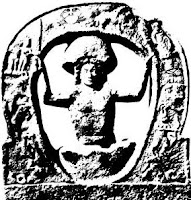“Resurrection” Myths vs. Resurrection of Jesus – Mithras
– This is the third in a series of posts on resurrection myths by Mary Jo
Why Mithras? There is so much hype on the internet, TV, and airwaves about the similarities between Christianity and Mithraism. I recently saw a YouTube video of a British television show claiming that Christianity was based on Mithraism. The host declared this as if it was evidenced, historical fact!
Some writings I have read on Mithras suggest that Christianity is a more highly evolved and refined version of the story of Mithras. Usually, several similarities are referenced with this claim; these can be read at the Tektonics website article on Mithraism: “Mighty Mithraic Madness: Did The Mithraic Mysteries Influence Christianity?” Upon reading the historical evolution of the god, Mithras, though, I have come to be very skeptical that Christianity borrowed worship rituals and sacred texts from this ancient Iranian god. The similarities stand upon little to no evidence from the ancient world. I am particularly concerned that the evidence for these similarities is only found in the Roman worship of Mithras; dating about the same time as the Christian faith was flourishing. Due to the Roman absorption of the deities of cultures they conquered, a much better explanation is a Roman incorporation of Christianity’s appealing aspects into the rituals and symbolism of Mithraism.
Hindu – Mitra
Roman – Mithras (later)
“Mitra” = contract
Mithra was born of a rock on the banks of a river under a sacred fig-tree. As he came forth from the rock he clenched a dagger in one hand and a torch in the other hand, which he used to illumine the depths from which he came. After Mithra had clothed himself in fig-leaves he took to subjugating the beings already created in the world. He did so by first measuring his strength with the sun; afterwards he concluded this endeavor with a treaty of friendship, being that he was a god of contracts. These two allies have supported each other ever since.
In Iranian creation mythology, there exists a primeval ox that contained the “germs”[ii] of the animal species and even a certain number of useful plants. Mithra is supposed to have attacked the primeval ox with help from his ally, the sun. He seized the beast by the nostrils with one hand and plunged his dagger into the ox’s flank with the other.[iii] As Mithra killed the beast, the “germs” of life spilled out and brought forth life to the earth.
Mithra was not the Supreme Being that created the universe in the Iranian mythology. Instead there are two beings representative of good and evil which are Ahura Mazda, the good being, and his arch rival, Angra Mainyu who came from the abyss of endless darkness. In this story, Ahura Mazda created life, and Angra Mainyu formed evil demons to assist him in his battle against Ahura Mazda. Mithra was a created “god,” the god of contracts and law.
Roman Worship of Mithras
Rome originally came into contact with Mithraism through Cilician pirates somewhere around 67 BC according to Plutarch, the Greek writer. The worship of Mithraism spread through Rome via the military camps and was attractive to young warriors. The Roman emperors known to have worshipped Mithras were Commodus (reigned 180-192 AD), Septimius Severus (reigned 193-211 A.D.), Caracalla (reigned 211-217 AD) and Geta (reigned 209-212 AD.) Mithraism flourished under these and subsequent emperors.[vii] “The most detailed descriptions of Mithras are found in the religious texts of ancient India and Persia, which preceded the Roman worship of Mithras by many centuries. The Roman evidence for Mithras, on the other hand, consists chiefly of sculptures.”[viii]
The earliest practices of Mithras worship in Rome are evidenced at mithraea (Mithras sanctuaries) dating from around the 2nd century. The latest evidence dates from the fourth century. Despite its great popularity, Mithraism was never a state cult, and no public spaces were built for Mithras, nor holidays connected with this god. This evidence supports Mithraism as a distinctly private religion.[ix]
Basically, from what I researched, this deity underwent numerous changes in Rome from its original Iranian-Persian conception. Rome was a vast empire that extended over numerous cultures and those cultures’ mythologies. As stated in World Mythology, “the Romans absorbed the myths of their conquered subjects. For the modern observer, the result is an array of apparently contradictory images – temples of native Italian deities side by side with those of Greek or Easter gods; high-ranking “Roman” priests standing shoulder to shoulder with the foreign, flamboyant, self-castrated priests of the Great Mother. No wonder some Romans debated what “real” Roman myth or religion might be.”[x] This proves to be a better description of why the worship of Mithras in the mystery religions bears similarities to Christianity, rather than the other way around.
MJ
Note: To investigate Mithraism and the rise of the cult (because there is so much more than I have presented), visit your local library’s reference section on mythology and world religions. Also, please check referenced documents for further documentation. Articles quoted have many more sources than provided here.
For Further Reading:
Reference Books
Willis, Roy. Ed. “Persian Myths.” World Mythology. Richmond Hill, Duncan Baird Publishers: 1993.
Parrinder, Geoffrey. Ed. The Illustrated Who’s Who in Mythology. New York, MacMillan Publishing Company: 1985.
Carnoy, Albert J. “Iranian Mythology,” Volume Six, Mythology of All Races. New York, Marshall Jones Company: 1917.
Puhvel, Jaan. Comparative Mythology. Baltimore, Johns Hopkins University Press: 1987.
Online Articles
Metzger, Bruce. Historical and Literary Studies: Pagan, Jewish, and Christian. Available from: http://www.frontline-apologetics.com/mystery_religions_early_christianity.htm Accessed January 22, 2007.
McDowell, Josh. “Is The New Testament Filled With Myths”. Chapter 14 of A Reasoned Defense. Available from: http://www.greatcom.org/resources/areadydefense/ch14/default.htm. Accessed January 22, 2007.
© Mary Jo Sharp 2007


